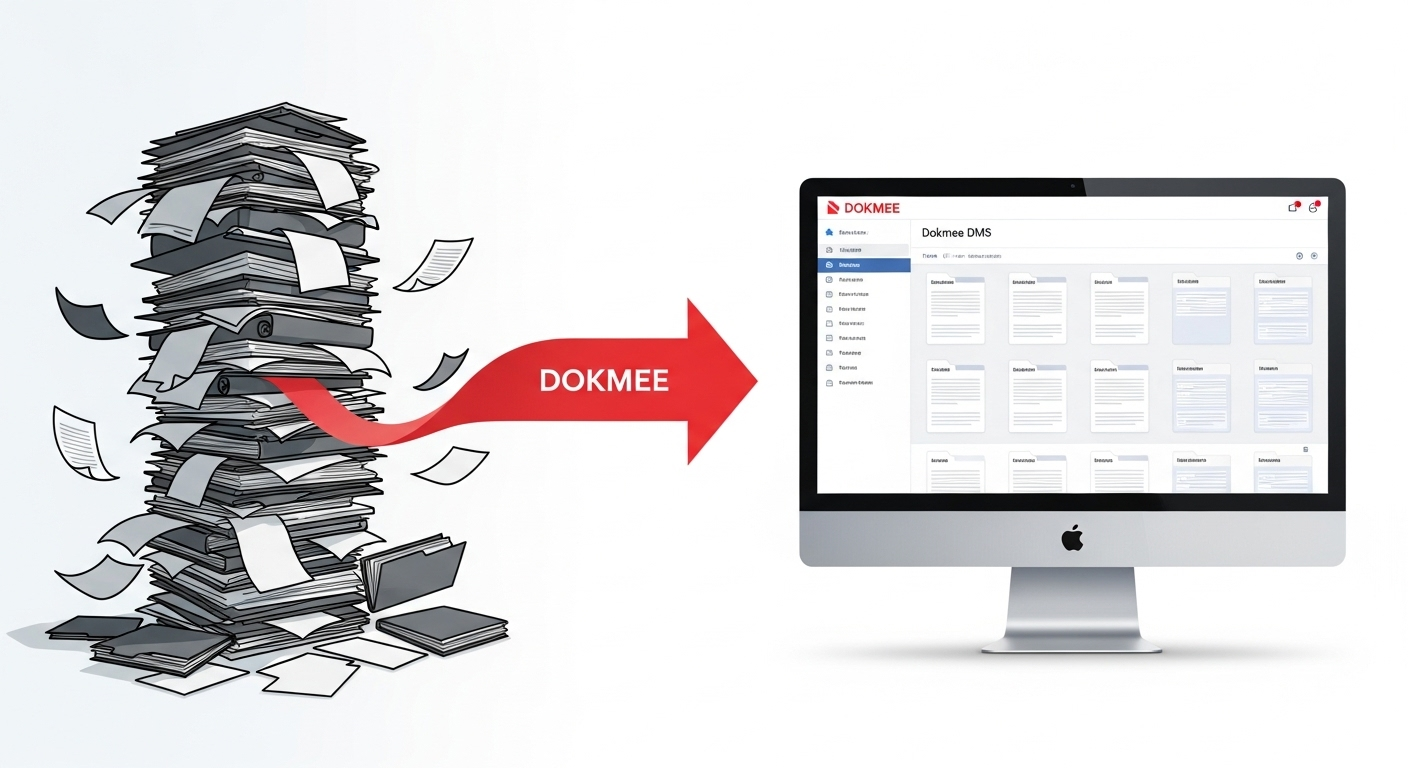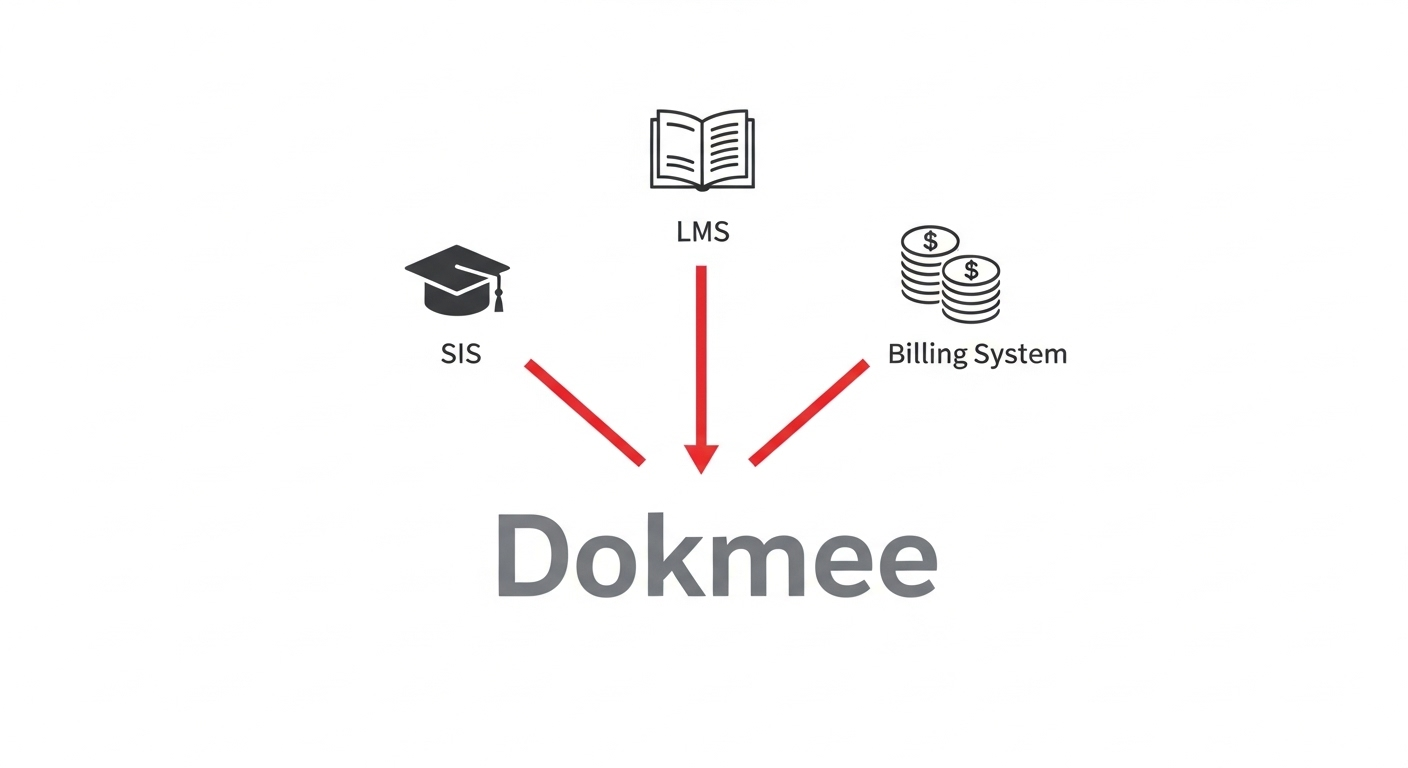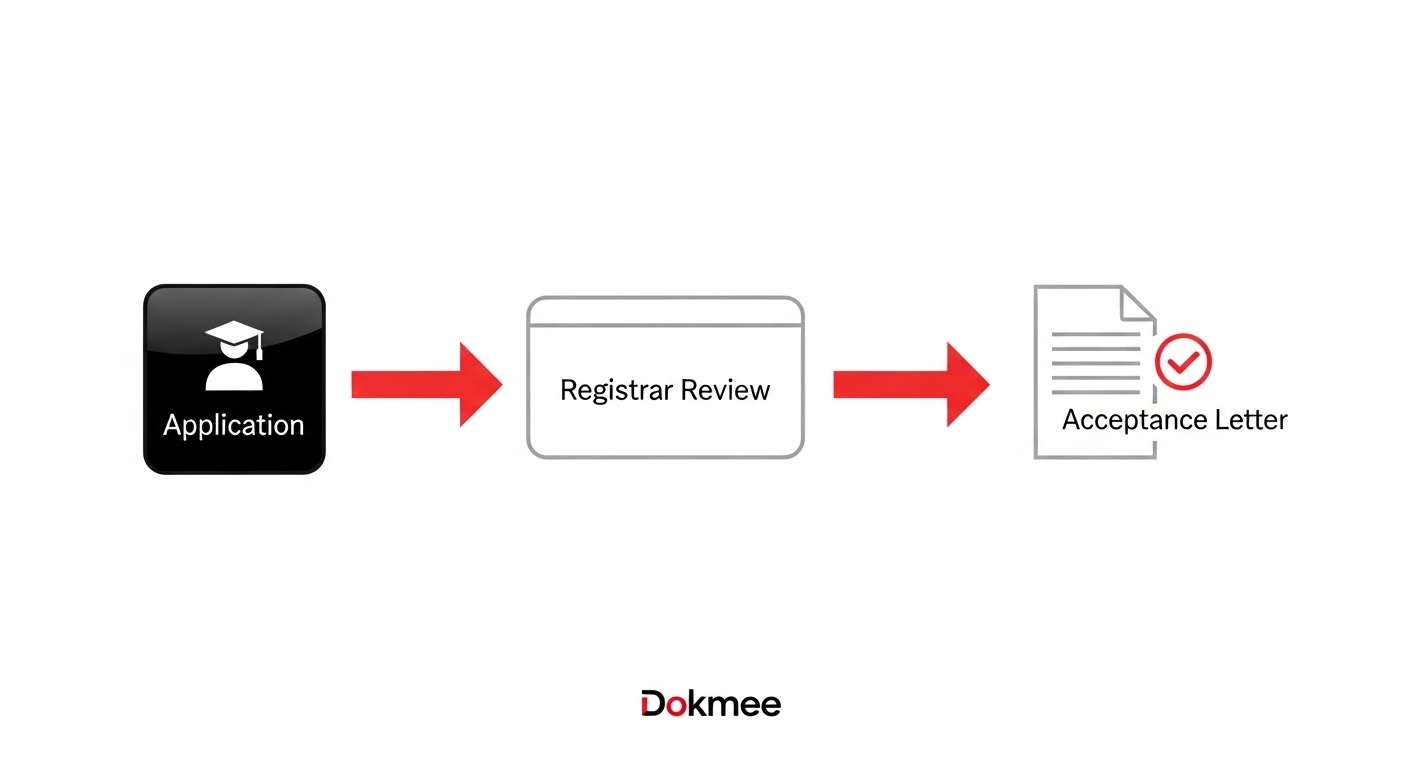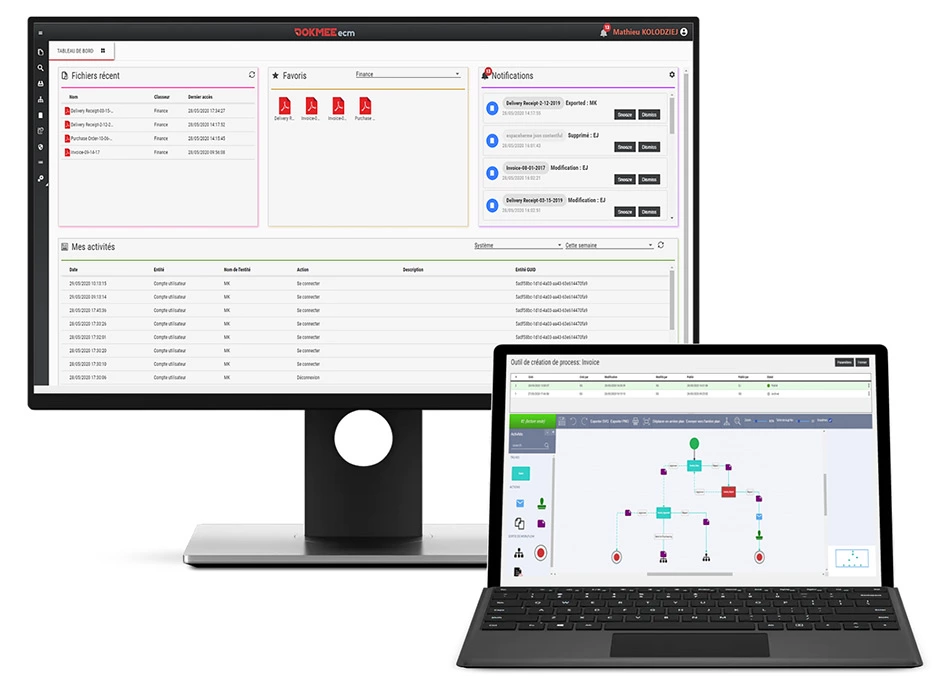
What Is a Document Management Workflow?

Educational institutions handle many documents per student, from transcripts and enrollment forms to disciplinary records and financial aid paperwork.
Yet many academic administrators report spending more time searching for documents than actually using them to make decisions.
Document Management Systems (DMS) designed for education transform how academic institutions operate. They guarantee FERPA compliance while making critical information instantly accessible.
A Document Management System (DMS) is software that captures, stores, and organizes your school’s documents digitally while maintaining security and accessibility. For your faculty, it means instead of hunting through filing cabinets or multiple computer folders, they can find everything in one searchable location.
Educational DMS platforms, like Dokmee, understand the needs of schools and universities. They’re designed around academic calendars, student life cycles, and educational compliance requirements (FERPA) rather than generic business processes.
The real value comes from connecting with your existing technology stack. Your DMS should work alongside your current Student Information System and Learning Management Platform and automatically organize documents where staff expect to find them.
Related: DMS vs. ECM
Schools and universities deal with massive document volumes that grow every semester.
Your registrar’s office probably has filing cabinets full of transcripts dating back decades. Each enrollment cycle, your admission teams have to manage thousands of applications.

Here’s where most educational institutions get stuck:
| Problem Area | What’s Happening | How DMS Helps |
|---|---|---|
| Record Disorganization | Student files scattered across departments and systems | Single repository with smart search capabilities |
| Privacy Risks | Manual FERPA compliance creates vulnerability | Automated privacy controls and access tracking |
| Time Waste | Staff spend hours locating basic documents | Instant retrieval through digital organization |
| Disconnected Systems | SIS, LMS, and admin tools don’t communicate | Unified platform that connects everything |
| Transfer Headaches | Compiling student records takes days or weeks | One-click transcript and record compilation |
| Remote Access Issues | Important documents stuck in on-campus filing systems | Cloud-based access from any location |
The scope of these problems varies widely.
A small private school might struggle with basic organization and parent communication, while large state universities deal with regulatory compliance across multiple campuses and thousands of faculty members.
What doesn’t vary is the impact: disorganized documents slow down every process from enrollment to graduation.
They frustrate your staff and delay service for students.
When evaluating DMS solutions for your educational institution, prioritize these capabilities:

Educational document security goes beyond basic password protection. You need multiple layers of protection specifically designed for student privacy:
Schools generate documents in many formats. Most of the time, your faculty will be handling everything from handwritten permission slips to research papers. Your DMS needs OCR technology that can handle:
Your DMS should feel like a natural extension of your existing educational technology stack. Documents should automatically link to the correct student records, and staff should access what they need without leaving their primary applications.

These integration capabilities become especially valuable during enrollment periods, parent-teacher conferences, and audit preparations. There, quick access to student histories, academic records, and compliance documentation has a direct impact on outcomes.
Successfully deploying DMS in your educational environment requires careful planning around academic schedules and institutional culture.
You can implement your DMS in 3 simple steps. Although you shouldn’t forget the last step: regularly checking that everything works properrly!
Not all document management systems understand schools. You need a platform built for educational workflows, not generic business processes.
Look for solutions that include preconfigured templates for student records, faculty documents, and administrative processes.
Dokmee handles such tasks perfectly.
Pay attention to criteria like FERPA compliance certifications, integration capabilities with popular educational software, and scalable pricing that works with education budgets.
Unlike businesses that can implement systems year-round, schools have natural break points. Plan your major rollout during winter break, spring break, or summer when staff have time to learn new systems without disrupting daily operations.
Create a phased approach: start with administrative offices, then expand to faculty, and finally include student-facing features like parent portals.
Academic staff respond better to peer recommendations than administrative mandates.
Identify enthusiastic early adopters in each department, for example, the teacher who loves trying new technology, the registrar who’s tired of filing cabinets, and the principal who wants streamlined processes.
These individuals become your training team.
Later, they can help colleagues adapt to digital workflows while maintaining the collaborative culture that schools value.
Should your institution implement a proper DMS?
Yes, it transforms how it operates at every level. Here are the benefits you’ll reap:
Administrative staff report significant time savings (several hours per week) on routine document processing after DMS implementation. Tasks that previously took hours, like compiling transcripts or preparing enrollment packets, now happen automatically.
Faculty spend less time on paperwork and more time on actual teaching and student interaction.
With this kind of efficiency, your faculty can focus more on educational quality and staff satisfaction instead of document-hunting.
Automated FERPA compliance eliminates the manual processes that typically lead to privacy violations. Your system maintains detailed audit trails and guarantees that only authorized personnel can access student information.
When the regulation officer is at your door, rest assured that all required documentation is instantly available and properly organized. You’ll no longer have to prepare weeks in advance for accreditation reviews or regulatory inspections.
A DMS lets you set up a secure parent portal that provides 24/7 access to student progress, attendance records, and school communications.
Parents can view report cards, permission slips, and school announcements without calling the office and hogging up work time.
One more benefit is that because curriculum documents, lesson plans, and assessment materials are centrally managed with version control, your faculty’s collaboration becomes greatly enhanced.
Digital document management eliminates paper storage costs and reduces physical filing requirements. Many scores see a huge drop in printing and storage expenses within the first year.
More importantly, faster administrative processing improves cash flow through quicker enrollment completion and more efficient billing cycles.
Let’s examine specific examples of how educational institutions use DMS to solve everyday challenges:
A community college processes 5,000+ applications annually across multiple programs with varying admission requirements.
Before DMS implementation, application processing took weeks and often resulted in incomplete files or lost documents.

Their DMS solution streamlines the entire enrollment workflow:
The result is application processing time dropped to 3–5 days, incomplete applications were nearly eliminated, and staff can handle far more applications without additional personnel.
A school district manages 800+ employees across 25 schools. Each requires different certifications, evaluations, and professional development tracking. Manual HR processes created compliance risks and made it difficult to track certification renewals.
Their DMS implementation automated HR workflows:
The district eliminated certification lapses, cut HR processing time in half, and improved compliance with state employment requirements.
An elementary school struggled with parent engagement. It relied on paper notices that usually went unread and inefficient phone tag for important communications.
Their secure parent portal solution provides:
Parent engagement greatly increased, and teachers report serious time savings on routine communications.
Dokmee’s DMS is specifically designed to handle the challenges facing academic institutions.
Our platform combines comprehensive compliance features with the flexibility schools need to manage diverse document types and workflows.

Get a Free Educational DMS Consultation with Dokmee
A Document Management System (DMS) is a platform that helps schools digitize student records, manage both paper and digital files, and streamline access during the transition. It supports hybrid workflows and bulk scanning to speed up archiving and improve compliance.
Educational DMS enforces student privacy through role-based access controls, detailed audit trails, and secure sharing protocols. Only authorized personnel can access specific student information, and all access is logged for compliance reporting.
Yes. Leading educational DMS platforms like Dokmee integrate with popular systems including PowerSchool, Infinite Campus, Canvas, and Blackboard. This integration ensures documents automatically link to the correct student records.
Most educational institutions are fully operational within 2–4 months. A phased rollout by department minimizes disruption and allows staff to adapt gradually while maintaining normal operations.
DMS automates transcript compilation and secure sharing between institutions. Complete student records can be compiled and transmitted electronically, reducing transfer processing from weeks to days.